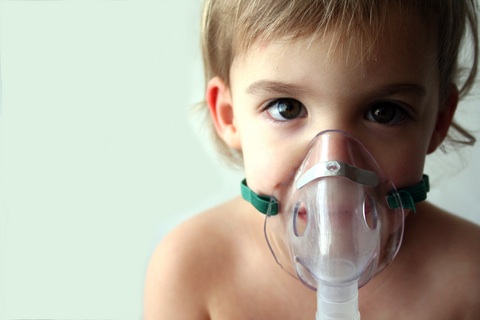BREATHLESS: The Truth About Asthma
Asthma is now the most common chronic illness in children, affecting one in every 10. In North America, eight percent of adults are also afflicted. In all, about three million Canadians and 25 million Americans suffer from this disease. While the number of people with asthma has continued to increase, rates of related hospitalizations and deaths have declined since the mid 1980s and 1999. Seventy to 80% of children and 50% of adults with asthma also have allergies. There are about 3,400 deaths annually from asthma in the U.S. and about 250 deaths per year in Canada.
Causes of Asthma
Asthma causes a narrowing of the breathing airways, which interferes with the normal movement of air in and out of the lungs. This condition also involves only the bronchial tubes and does not affect the air sacs or the lung tissue. The narrowing that occurs is caused by three factors: inflammation, bronchospasm, and hyper-reactivity. Often on an xray exam, we find that people with asthma have major spine misalignments surrounding the nerves that connect to the lungs.
The bronchial tubes become red, irritated, and swollen. This inflammation increases the thickness of the wall of the bronchial tubes and thus results in a smaller passageway for air to flow through. Allergens, irritants, or chemical mediators may create this inflammation. The inflamed tissues produce an excess amount of sticky mucus into the tubes. The mucus can clump together and form plugs that can clog the smaller airways.
The muscles around the bronchial tubes tighten and increase their narrowness. The chronically inflamed and constricted airways become highly sensitive, or reactive, to triggers such as allergens, irritants, and infections. Exposure to these triggers may result in progressively more inflammation and narrowing.
Symptoms of Asthma
The result of an asthma attack is in difficulty with breathing out, or exhaling, causing a “wheezing” sound. People with asthma also may cough to expel the thick mucus plugs. This reduction of the flow of air may result in less oxygen passing into the bloodstream. Carbon dioxide may accumulate in the blood, which can be life-threatening.
Allergy may play a role in some asthma patients. Heredity may also be a factor.
Asthma Treatments
There is currently no cure and no single exact cause has been identified. But there are some myths about which the medical community has dispelled:
- Asthma is not a psychological condition. However, emotional triggers can cause flare-ups.
- You cannot outgrow it.
- A new environment may temporarily improve asthma symptoms, but it will not cure asthma. After a few years in the new location, many people become sensitized to the new environment and the asthma symptoms return with the same or even greater intensity than before.
- Swimming is an optimal exercise for those with asthma. Exercising in dry, cold air may be a trigger for asthma in some people.
- Asthma attacks cannot be faked, despite rare cases of a psychological condition known by a variety of names (factious asthma, spastic dysphonia) where emotional issues may cause symptoms that mimic asthma symptoms.
Allergic asthma affects around six out of 10 people with asthma. Many symptoms of allergic asthma and non-allergic asthma are the same, but the triggers are different. Allergic asthma is triggered by allergens. If you have allergic asthma, your asthma symptoms may happen when you breathe in an allergen, such as dust or pet dander.
Asthma Triggers
Common asthma triggers include:
- Animals (pet hair or dander)
- Dust mites
- Certain medicines (aspirin and other NSAIDS)
- Changes in weather (most often cold weather)
- Chemicals in the air or in food
- Exercise
- Mold
- Pollen
- Respiratory infections, such as the common cold
- Strong emotions (like stress)
- Tobacco smoke
Symptoms include:
- Cough with or without sputum (phlegm) production
- Pulling in of the skin between the ribs when breathing
- Shortness of breath that gets worse with exercise or activity
- Wheezing
Emergency symptoms that need prompt medical help include:
- Bluish color to the lips and face
- Decreased level of alertness, such as severe drowsiness or confusion, during an attack
- Extreme difficulty breathing
- Rapid pulse
- Sweating
Many people with asthma have a personal or family history of allergies, such as hay fever or eczema. Others have no history of allergies.
There are various ways to prevent asthma attacks and reduce symptoms. Cover bedding with allergy-proof casings to reduce exposure to dust mites. Remove carpets from bedrooms and vacuum regularly. Use only unscented detergents and cleaning materials in the home. Keep humidity levels low and fix leaks to reduce the growth of organisms such as mold.
Keep the house clean and keep food in containers and out of bedrooms. This helps reduce the possibility of cockroaches. Body parts and droppings from cockroaches can trigger attacks in some people.
Additionally, we have found that by mobilizing the spine and keeping it flexible, Asthma sufferers report relief. Chiropractic care may help and we'd like to show you how!

